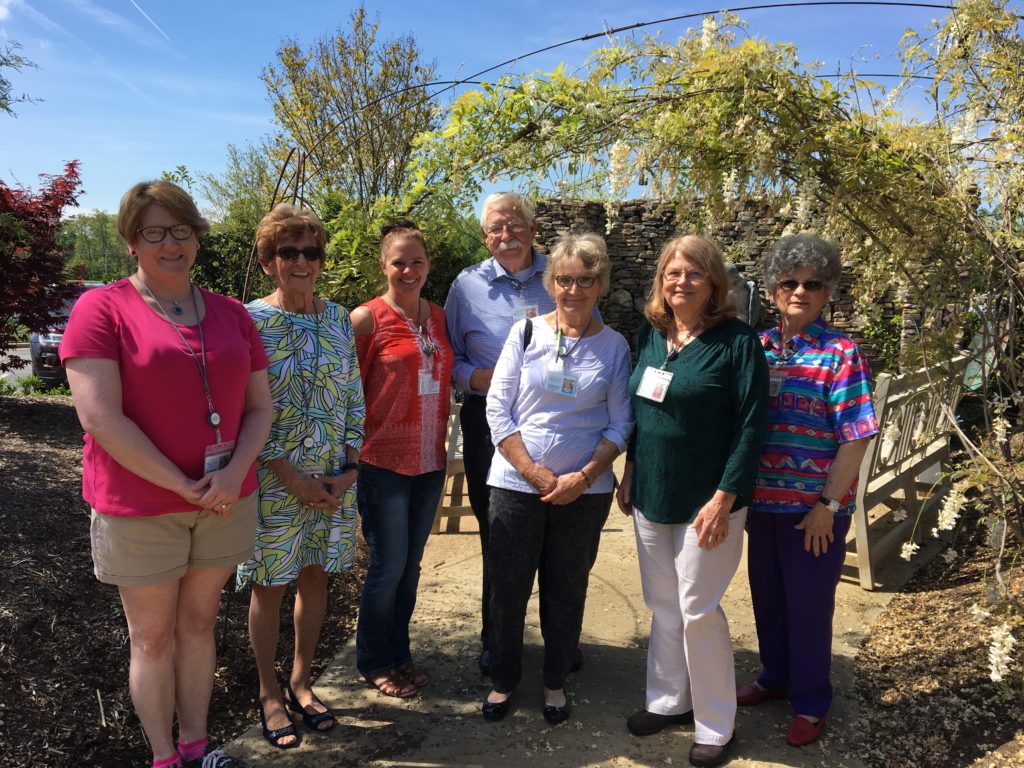Hospices nationwide are challenged by the need for social distancing and sheltering in place during the COVID-19 outbreak, and this includes management and recruitment of volunteers, on whom many patients and providers rely for essential support.
The U.S. Center for Medicare and Medicaid Services (CMS) in normal circumstances requires that volunteers provide at least 5% of hospice patient care hours. Many hospices also rely on volunteers to organize educational programming, perform back office work, fundraising and to help patients stave off loneliness and social isolation.
Due to the pandemic, CMS recently waived several hospice regulations, including the requirement that volunteers provide 5% of patient care. A number of providers have been unable to maintain their volunteer services as the pandemic continues to take its toll.
“All of the face-to-face support provided by our trained volunteers has ceased,” said Hillary H. Bennett, volunteer services manager at Hospice of Davidson County in North Carolina, in an e-mail to Hospice News. “Many of our volunteers are in the older age bracket, so we want to keep them unexposed to this virus, as well [as patients].”
 Hospice of Davidson County
Hospice of Davidson CountyWhile some hospice volunteer services have proceeded, such as virtual visits with patients, many hospices have canceled volunteer activities and events due to social gathering restrictions nationwide, and as more states enact shelter in place orders. With these limitations, volunteer capacity has diminished in areas such as office support and in-person patient interactions, which can add up to substantial missed volunteer hours for hospices.
“Closing down all [in-person] volunteer activities has helped limited potential exposure to the virus,” Amanda Peterson, communications and volunteer coordinator for Calvert Hospice in Maryland, told Hospice News. “I encourage volunteers to stay at home and practice safe social distancing. The waiver from CMS relieves some pressure, especially if the restrictions stay in place longer than we originally anticipated.”
Technology has played a poignant role in providing a solution that allows volunteers to continue serving hospices as the COVID-19 outbreak surges. Phone, email, teleconferencing and video calls have become a crucial part of connectivity and cohesiveness.
“I have a spiritual care volunteer, a Catholic deacon, who normally visits with our Catholic patients and provides sacraments,” said Peterson. “He has started making phone calls to the patients and families, and he is providing prayer and support over the phone. I also have a volunteer who does grocery shopping, but our staff goes out to her car to unload the groceries now.”
Hospices have increasingly turned to telehealth to keep care teams and volunteers connected with one another and with patients safely as CMS temporarily expanded flexibilities allowing health care providers to bill for these services.
“We have implemented a few options for our volunteers that can be done in the comfort of their own homes, providing not only a connection to those we serve but also for the volunteers,” said Bennett. “We are managing volunteers from a distance.”
Volunteer workforces are still an important resource for hospices as they face COVID-19 challenges and work to address them by modifying practices and delivery of care. Volunteers are finding innovative ways to continue serving both hospice providers and their patients.
“We have the two trained volunteers making fabric masks,” Bennett said. “They started making the masks from the supplies they already had at home; fabric, elastic, ribbon, thread. We didn’t want our volunteers going out to stores for supplies, so we purchased some supplies and are having them shipped to their home. She left them on her porch and waved and smiled through the glass door. Tasks like this give volunteers a sense of purpose while social distancing at home.”
Volunteer recruitment efforts continue during the ongoing pandemic, with hospices using social media, online efforts and word-of-mouth tactics throughout their communities. Onboarding is increasingly taking place through virtual interactions and online training programs. Even with the social distancing challenges of COVID-19, hospice volunteers are still stepping up to pitch in.
“I believe during times of crisis is when helpers show themselves,” Bennett told Hospice News. “People gain perspective and want to give back to others. Generous, selfless, and thoughtful people are the best volunteers and human beings.”



